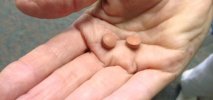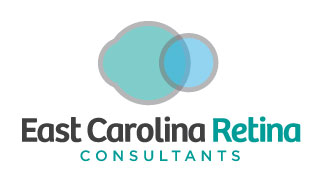New Treatment for Macular holes
Recent approval of Jetrea (Ocriplasmin) to treat symptomatic VMA (Vitreo Macular Adhesion) has opened up a new era in non surgical management of macular holes. Previously only a hospital based surgery was able to reverse the process of macular hole development but now a new drug can be injected into the eye painlessly in the office and within a few weeks the process reverses back to more normal vision levels.... more
FDA Approves ASRS Leader's ArgusŪ II Artificial Retina
On February 14, the FDA approved the Argus II artificial retina developed by ASRS Executive Committee and Board Member Mark S. Humayun, MD, PhD.
This breakthrough technology is the first ever to offer limited vision to patients with late-stage retinitis pigmentosa (RP).
Second Sight Medical Products (Sylmar, CA) manufactures the Argus II implant, which has 60 electrodes and a tiny camera mounted on eyeglasses to capture images.
The FDA approved Argus II for adults age 25 years or older with severe to profound RP. About 10,000 to 15,000 of the 100,000 Americans with RP will qualify for Argus II. Up to 4,000 patients a year can be treated with the device.
Macular degeneration and Aspirin?

Aspirin and Macular degeneration... is there an increase in the wet form of macular degeneration in those patients taking aspirin? The wet form develops quicker than the dry form. It may only be related to the fact that you are more likely to take aspirin if you have medical problems like stroke or heart attacks in the past and these conditions are more commonly associated with wet age related macular degeneration. ... more

Focal Laser Treatments
Overview:
Focal Laser treatments can effectively reduce further damage being caused by leaky vessels. The procedure is both safe and effective, and can usually be done in a single day at our office without need for a hospital visit. Usually this is done in the clinic with only topical anesthesia.
Process:
Focal Laser treatments are performed in our office under dim lighting, with your body facing the machine, sitting up at the slit lamp (typically for retinal edema but also for tears). Depending on your procedure, you may be asked to lie down (typically for retinal tears). To prepare for the procedure, your eyes will be dilated and numbing drops administered.
During the treatment--which typically only takes a few minutes--the focal laser’s concentrated beam of light is guided by your physician to sculpt tissue in a way that will slow the leaking of the vessels or seal the retina tear.
After the procedure, you can return home, but should have someone drive you, as your vision will be blurred for a day or two. Your physician will schedule a follow-up examination for several weeks to months out to evaluate your progress. You will most likely not have to have a patch, eye drops, or special medication following focal laser treatment and should be able to resume normal activities without restriction. Post-treatment, you may experience some pain, blurred vision, or a mild headache (which can be treated with over the counter (OTC) medications such as Tylenol, Advil or Motrin, as directed). You should avoid bending or straining for two weeks, but bend at the knees if needed to keep your head above your heart.
Benefits:
- Can prevent further vision loss due to macular edema, retinal holes, retinal tears, and wet macular degeneration.
- Quick procedure with very low risk of infection
Risks:
- Blurring after treatment could remain permanent in rare cases.
- The laser could cause scarring, bleeding, or damage to healthy tissue.
- If you do not hold still and follow instructions, unintentional burn to the center of the vision can happen and this is a permanent blurring of the vision that cannot be corrected. This is an unavoidable risk of laser treatment. This is rare but can happen. Holding your eyes very still during the short procedure can prevent this problem.






